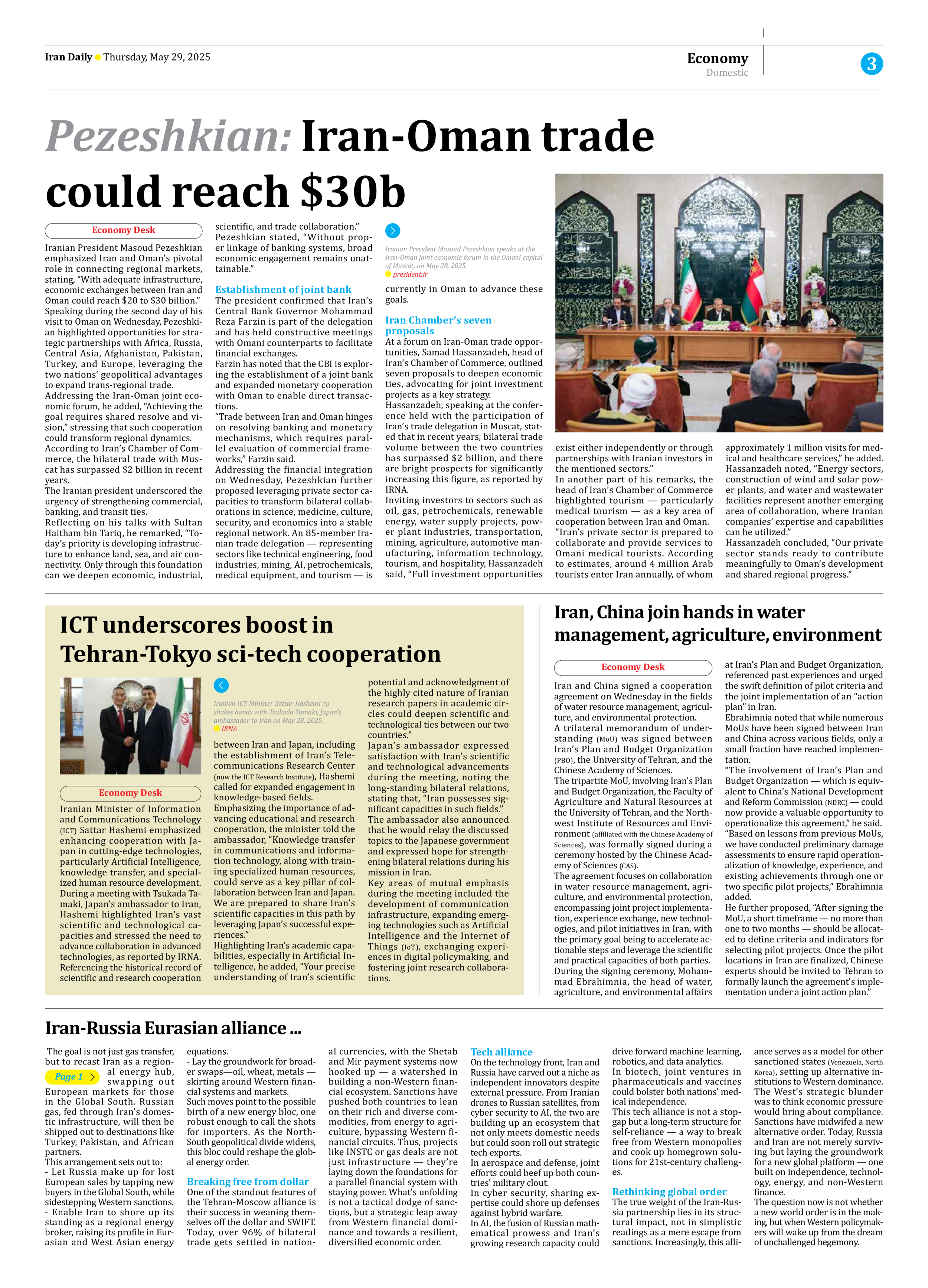
Iran-Russia Eurasian alliance ...
Page 1
The goal is not just gas transfer, but to recast Iran as a regional energy hub, swapping out European markets for those in the Global South. Russian gas, fed through Iran’s domestic infrastructure, will then be shipped out to destinations like Turkey, Pakistan, and African partners.
This arrangement sets out to:
- Let Russia make up for lost European sales by tapping new buyers in the Global South, while sidestepping Western sanctions.
- Enable Iran to shore up its standing as a regional energy broker, raising its profile in Eurasian and West Asian energy equations.
- Lay the groundwork for broader swaps—oil, wheat, metals — skirting around Western financial systems and markets.
Such moves point to the possible birth of a new energy bloc, one robust enough to call the shots for importers. As the North-South geopolitical divide widens, this bloc could reshape the global energy order.
Breaking free from dollar
One of the standout features of the Tehran-Moscow alliance is their success in weaning themselves off the dollar and SWIFT. Today, over 96% of bilateral trade gets settled in national currencies, with the Shetab and Mir payment systems now hooked up — a watershed in building a non-Western financial ecosystem. Sanctions have pushed both countries to lean on their rich and diverse commodities, from energy to agriculture, bypassing Western financial circuits. Thus, projects like INSTC or gas deals are not just infrastructure — they’re laying down the foundations for a parallel financial system with staying power. What’s unfolding is not a tactical dodge of sanctions, but a strategic leap away from Western financial dominance and towards a resilient, diversified economic order.
Tech alliance
On the technology front, Iran and Russia have carved out a niche as independent innovators despite external pressure. From Iranian drones to Russian satellites, from cyber security to AI, the two are building up an ecosystem that not only meets domestic needs but could soon roll out strategic tech exports.
In aerospace and defense, joint efforts could beef up both countries’ military clout.
In cyber security, sharing expertise could shore up defenses against hybrid warfare.
In AI, the fusion of Russian mathematical prowess and Iran’s growing research capacity could drive forward machine learning, robotics, and data analytics.
In biotech, joint ventures in pharmaceuticals and vaccines could bolster both nations’ medical independence.
This tech alliance is not a stopgap but a long-term structure for self-reliance — a way to break free from Western monopolies and cook up homegrown solutions for 21st-century challenges.
Rethinking global order
The true weight of the Iran-Russia partnership lies in its structural impact, not in simplistic readings as a mere escape from sanctions. Increasingly, this alliance serves as a model for other sanctioned states (Venezuela, North Korea), setting up alternative institutions to Western dominance.
The West’s strategic blunder was to think economic pressure would bring about compliance. Sanctions have midwifed a new alternative order. Today, Russia and Iran are not merely surviving but laying the groundwork for a new global platform — one built on independence, technology, energy, and non-Western finance.
The question now is not whether a new world order is in the making, but when Western policymakers will wake up from the dream of unchallenged hegemony.







